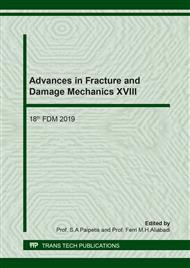p.153
p.159
p.165
p.171
p.178
p.184
p.190
p.196
p.203
Influence of Unsizing and Carbon Nanotube Grafting of Carbon Fibre on Fibre Matrix Interfacial Shear Strength of Carbon Fibre and Polyamide 6
Abstract:
Carbon Fibre Reinforced Thermoplastics (CFRTP) are expected to be applied to the automotive industry instead of CFRP which require curing time, due to the expected short production cycle time of CFRTP, which is using thermoplastic as a matrix. We reported that the grafting of carbon nanotubes (CNTs) on the carbon fibre improves the fibre matrix interfacial shear strength. In our process to graft CNTs on carbon fibre, chemical vapour deposition (CVD) method was used and Ni, which was used as the catalyst, was electrically plated onto carbon fibres. Since commercially available carbon fibre was sized, which may affect the plating behaviour of Ni, the effects of sizing agents on CNT deposition have to be clarified. In this study, Ni for catalytic metal was plated by electrolytic plating using a watt bath on spread PAN-based carbon fibre and unsized carbon fibre, and the influence of the sizing agent to the distribution of Ni was evaluated. The morphological observation of carbon fibre and single fibre pull-out test were conducted to clarify the influence of sizing agent on the CNT deposition and the interfacial shear strength between the CNT grafted carbon fibre and Polyamide 6 (PA6). Uniform distribution of small sized Ni particles can be obtained on unsized carbon fibre and uniform Ni particles results in uniform CNT distribution. The CNT grafted unsized carbon fibre showed higher interfacial shear strength with PA6 than that of sized carbon fibre.
Info:
Periodical:
Pages:
178-183
Citation:
Online since:
December 2019
Authors:
Price:
Сopyright:
© 2020 Trans Tech Publications Ltd. All Rights Reserved
Share:
Citation:


